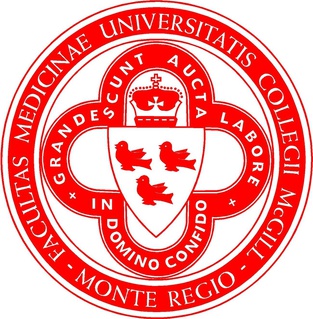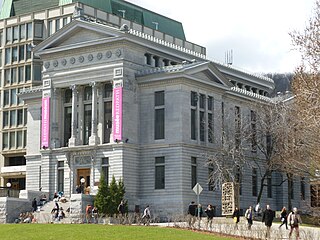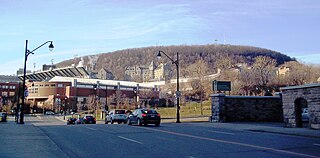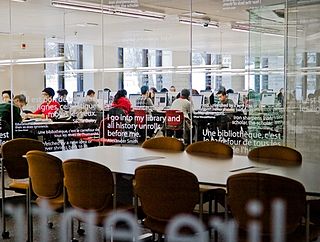
Sir William Osler, 1st Baronet, was a Canadian physician and one of the four founding professors of Johns Hopkins Hospital. Osler created the first residency program for specialty training of physicians, and he was the first to bring medical students out of the lecture hall for bedside clinical training. He has frequently been described as the Father of Modern Medicine and one of the "greatest diagnosticians ever to wield a stethoscope". Osler was a person of many interests, who in addition to being a physician, was a bibliophile, historian, author, and renowned practical joker. Outside of medicine, he was passionate about medical libraries and medical history and among his achievements were the founding of the History of Medicine Society, at the Royal Society of Medicine, London. In the field of librarianship he was instrumental in founding the Medical Library Association of Great Britain and Ireland, the Association of Medical Librarians with three others, including Margaret Charlton, the medical librarian of his alma mater, McGill University. He left his large history of medicine library to McGill, where it continues to exist as the Osler Library.

Percy Erskine Nobbs was a Canadian architect who was born in Haddington, East Lothian, and trained in the United Kingdom. Educated at the Edinburgh Collegiate School and Edinburgh University, he spent most of his career in the Montreal area. Often working in partnership with George Taylor Hyde, Nobbs designed a great many of what would become Montreal's heritage buildings and was a key Canadian proponent of the Arts and Crafts Movement in architecture. He served as the director of McGill University's School of Architecture for ten years and designed many buildings on the campus as well as McGill's Coat of Arms, which continues to be used today.

Margaret Charlton was a pioneering Canadian medical librarian who was instrumental in founding the Association of Medical Librarians, which became the Medical Library Association in 1907. She was the association's first secretary.

The Osler Library, a branch of the McGill University Library, is Canada's foremost scholarly resource for the history of medicine, and one of the most important libraries of its type in North America. It is currently located in the McIntyre Medical Sciences Building in Montréal.

Maude Elizabeth Seymour Abbott was a Canadian physician, among Canada's earliest female medical graduates, and an internationally known expert on congenital heart disease. She was one of the first women to obtain a BA from McGill University.

Duncan McIntyre was a Scots-Quebecer businessman from Callander noted for his participation in the Canadian Pacific Railway syndicate of 1880 and as a founder of the Bell Telephone Company of Canada.

The Faculty of Medicine and Health Sciences is one of the constituent faculties of McGill University. It was established in 1829 after the Montreal Medical Institution was incorporated into McGill College as the college's first faculty; it was the first medical faculty to be established in Canada. The Faculty awarded McGill's first degree, and Canada's first medical degree to William Leslie Logie in 1833.
The Desautels Faculty of Management is a faculty of McGill University. The faculty offers a range of undergraduate and graduate-level business programs including the Bachelor of Commerce, Master of Business Administration, and Doctor of Philosophy in management degrees. The Faculty of Management also offers a joint MBA/Law program with the Faculty of Law.
Frank Clarke Fraser was a Canadian medical geneticist. Spanning the fields of science and medicine, he was Canada's first medical geneticist, one of the creators of the discipline of medical genetics in North America, and laid the foundations in the field of Genetic Counselling, which has enhanced the lives of patients worldwide. Among his many accomplishments, Fraser pioneered work in the genetics of cleft palate and popularized the concept of multifactorial disease. Fraser is an iconic figure in Canadian medicine, as well as a biomedical pioneer, a fine teacher, and an outstanding scientist.

McGill University is an English-language public research university located in Montreal, Quebec, Canada. Founded in 1821 by royal charter granted by King George IV, the university bears the name of James McGill, a Scottish merchant whose bequest in 1813 formed the university's precursor, University of McGill College ; the name was officially changed to McGill University in 1885.

The Faculty of Engineering is one of the constituent faculties of McGill University in Montreal, Quebec, Canada, offering undergraduate and graduate degrees in chemical, civil, computer, electrical, mechanical, bio-engineering, materials and mining engineering. The faculty also comprises the School of Architecture and the School of Urban Planning, and teaches courses in bio-resource engineering and biomedical engineering at the master's level.

The Redpath Museum is a museum of natural history belonging to McGill University and located on the university's campus at 859 Sherbrooke Street West in Montreal, Quebec. It was built in 1882 as a gift from the sugar baron Peter Redpath.

Burnside Hall is a McGill University building located at 805 Sherbrooke Street West, on the university's downtown campus in Montreal, Quebec. It is named after Burnside Place, the Montreal estate of James McGill, the university's founder. Built in 1970 by Marshall, Merrett, and Associates to accommodate the Faculty of Science, the thirteen-storey building is constructed in Brutalist style and stands just northeast of the Roddick Gates, in the centre of McGill's campus.

Pine Avenue is an east–west street in Montreal, Quebec, Canada. This street serves as the dividing line between the downtown Ville-Marie borough and borough of Le Plateau-Mont-Royal, and also serves as the northern border of the Golden Square Mile historic district, further west.
The McGill University Life Sciences Research Complex (MULSRC) or simply the McGill Life Sciences Complex is a collaborative effort between McGill's Faculty of Science, Faculty of Medicine and Health Sciences and the McGill University Health Centre to create a multi-disciplinary research environment for investigators in the life sciences. The complex brings scientists together to work on research projects within five thematic biomedical fields:
The McLennan Library Building of McGill University in Montreal, Quebec, Canada is situated at the northeast corner of Sherbrooke Street and McTavish Street. The building, along with the Redpath Library Building, currently houses the Humanities and Social Sciences Library, the largest branch of the McGill University Library.

The Roddick Gates, also known as the Roddick Memorial Gates, are monumental gates in Montreal that serve as the main entrance to the McGill University downtown campus. They are located on Sherbrooke Street West and are at the northern end of the very short but broad McGill College Avenue, which starts at Place Ville-Marie.

McGill University Library is the library system of McGill University in Montréal, Québec, Canada. It comprises 13 branch libraries, located on the downtown Montreal and Macdonald campuses, holding over 11.78 million items. It is the fourth-largest research intensive academic library in Canada and received an A− from The Globe and Mail's 2011 University Report, the highest grade awarded to the library of a large university.

The Osler Library Archival Collection is an ensemble of more than 200 archival fonds held at the Osler Library of the History of the Medicine, at the third floor of the McIntyre Medical Sciences Building in Montreal.

Rolando Fausto Del Maestro is an Italian-born Canadian neurosurgeon, the William Feindel Professor Emeritus in neuro-oncology and director of the Neurosurgical Simulation Research Center at the Montreal Neurological Institute and Hospital, where he has been involved in mimicking real brain surgery by creating a virtual setting, founded upon the principles of flight simulation.


















